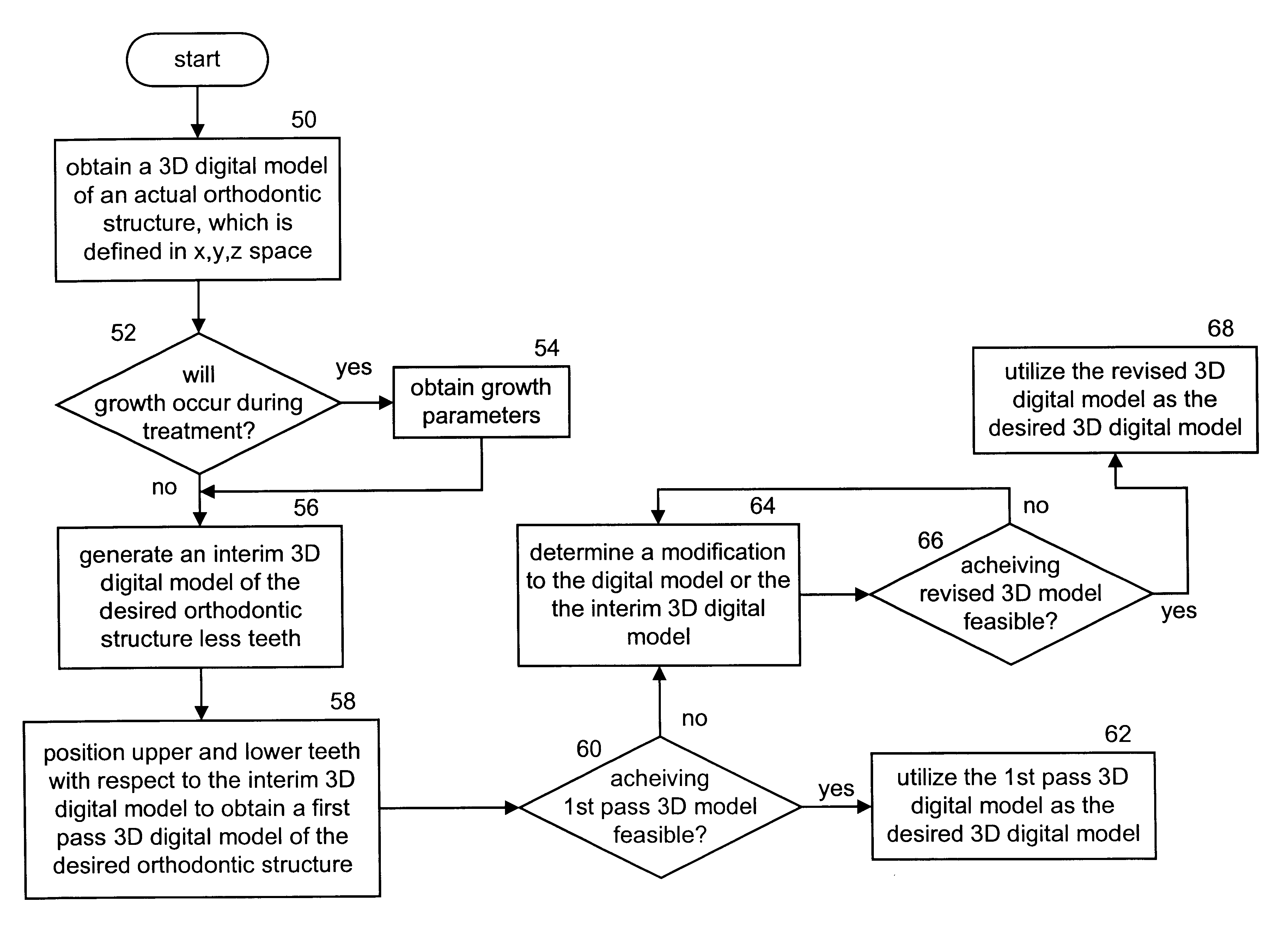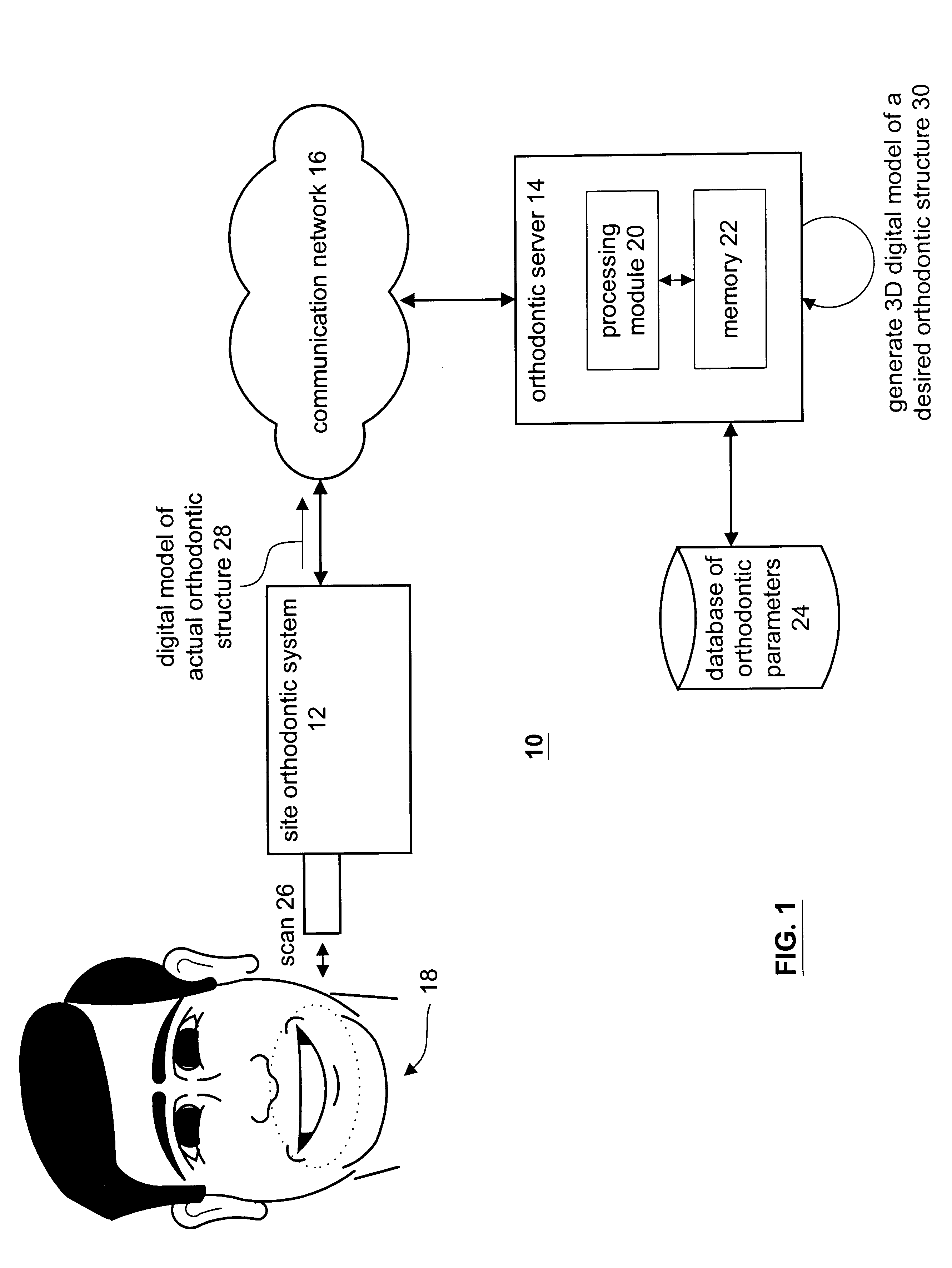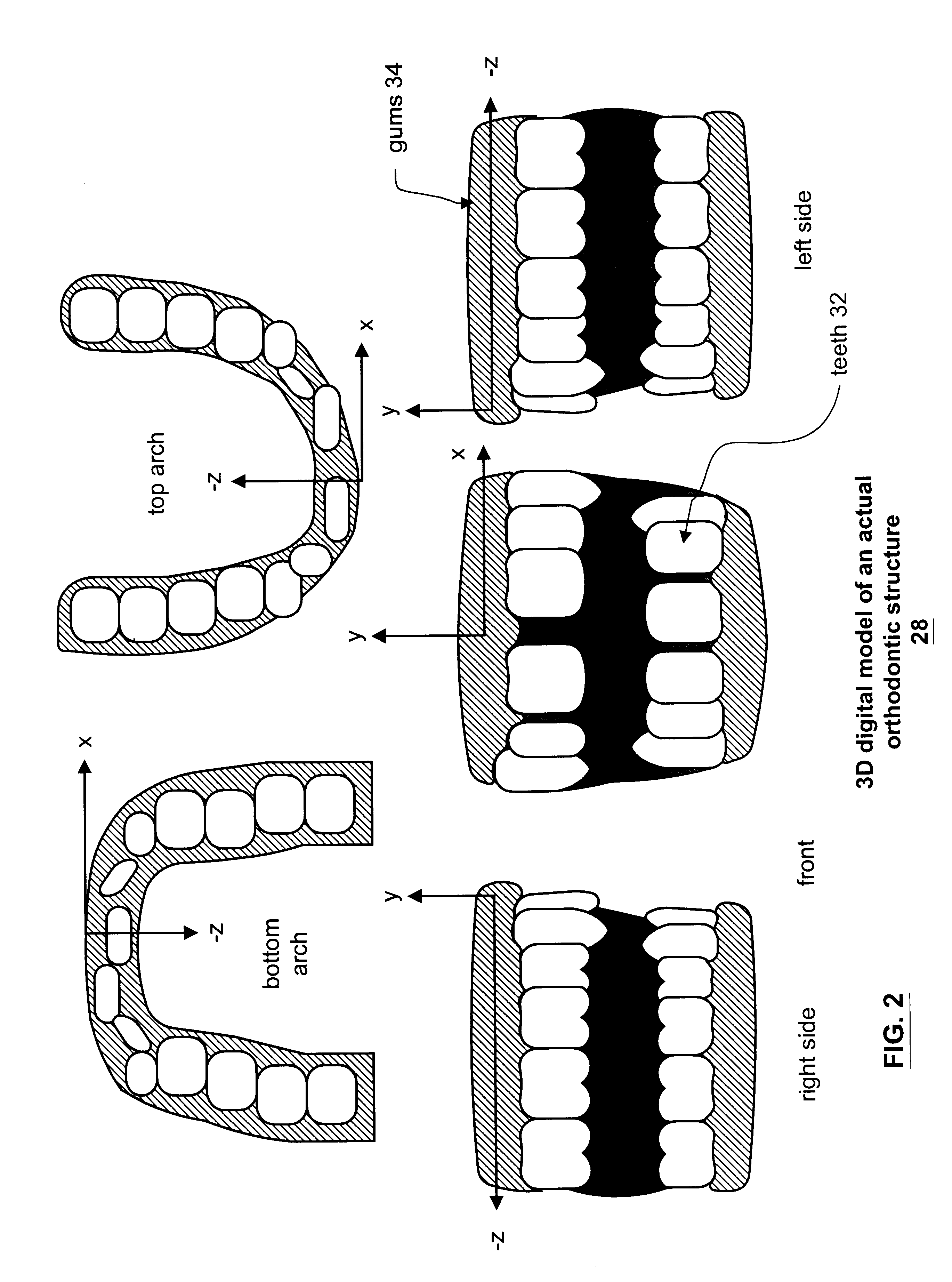Method and apparatus for generating a desired three-dimensional digital model of an orthodontic structure
a digital model and orthodontic technology, applied in the field of orthodontics, can solve the problems of human inability to accurately develop a visual three-dimensional image of an orthodontic structure, manual application of such bends, and inability to accurately estimate three-dimensional wire bends
- Summary
- Abstract
- Description
- Claims
- Application Information
AI Technical Summary
Problems solved by technology
Method used
Image
Examples
Embodiment Construction
Generally, the present invention provides a method and apparatus for generating a three-dimensional digital model of a desired orthodontic structure. Such a method and apparatus include processing that begins by obtaining a three-dimensional model of an actual orthodontic structure, wherein the three-dimensional digital model is defined in x, y, z space. The processing then continues by generating an interim three-dimensional model of the desired orthodontic structure less teeth. The interim three-dimensional model is designed in x, y, z space and includes the desired placement of an occlusal plane, an upper-arch form, a lower-arch form, an upper-arch midline, and a lower-arch midline. The processing then continues by positioning the upper and lower teeth with respect to the interim digital model and the defined x, y, z space to obtain a first pass three-dimensional digital model of the desired orthodontic structure. The processing continues by determining whether achieving the firs...
PUM
 Login to View More
Login to View More Abstract
Description
Claims
Application Information
 Login to View More
Login to View More - R&D
- Intellectual Property
- Life Sciences
- Materials
- Tech Scout
- Unparalleled Data Quality
- Higher Quality Content
- 60% Fewer Hallucinations
Browse by: Latest US Patents, China's latest patents, Technical Efficacy Thesaurus, Application Domain, Technology Topic, Popular Technical Reports.
© 2025 PatSnap. All rights reserved.Legal|Privacy policy|Modern Slavery Act Transparency Statement|Sitemap|About US| Contact US: help@patsnap.com



